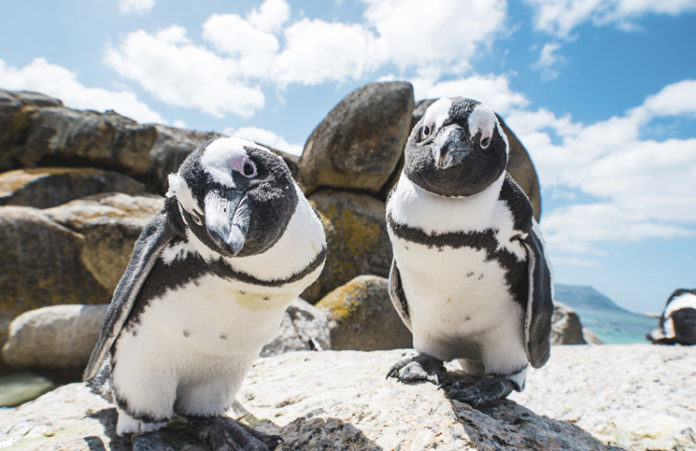
The Simon’s Town penguin colony is home to the endangered African penguin. In an effort to protect and conserve our endangered feathered friends, the City has teamed up with the South African National Parks (SANParks), the South African Foundation for the Conservation of Coastal Birds (SANCCOB) and the Cape Town Environmental Education Trust (CTEET) to implement a management and monitoring programme for the penguins.
The Simon’s Town penguin colony is a top conservation priority and is home to at least 854 breeding pairs of African penguins. The African penguin, Spheniscus demersus, is listed as endangered on the International Union for Conservation of Nature (IUCN) Red List of Threatened Species.
The sections of the Simon’s Town penguin colony from Seaforth Beach to Water’s Edge Beach, and from Burghers’ Walk to Windmill Beach and Franks Bay, are free-access areas managed by the Transport and Urban Development Authority’s Environmental Management Department.
The marine environment adjacent to the penguin colony is part of the Table Mountain National Park Marine Protected Area (MPA), which stretches from Muizenberg around Cape Point to Green Point.
The Boulders Restricted Zone, adjacent to the penguin colony, is one of six ‘no-take MPA zones’ where no fishing is allowed and activities such as diving are regulated. The main purpose of the penguin management team is to ensure that the seabirds are protected and co-exist peacefully. The programme therefore includes the following:
Monitors look for penguins breeding outside core breeding areas and move them to safety. Small microchips have been implanted under the penguins’ skins so that they can be identified using a hand-held or ground reader, which allows for the easy collection of data and reduces the stress for the penguins.
African penguins usually breed and moult once a year. The monitors conduct regular nest checks and counts. This data is used to determine the long-term breeding success of the population.
During a moult, penguins replace all their feathers in order to retain their waterproofing properties and, as a result, they are land-bound and cannot go to sea to feed. When the moulting period coincides with the breeding period, the adult penguins are unable to feed their chicks.
The penguin monitors then rescue the abandoned chicks and take them to SANCCOB for hand-rearing and release once they are old enough to go to sea. The monitors rescue injured penguins and other birds that they find on their daily sweeps or which are reported by members of the public. The monitors also rescue any oiled birds which are taken to SANCCOB for cleaning and rehabilitation.
Historically, penguins used to breed on the offshore islands and were safely protected from land-based predators, but the destruction of the breeding habitat on the islands due to guano collection and egg collection reduced their ability to breed successfully there.
However, the land-based penguin colonies that have established themselves in recent times are vulnerable to predators including mongoose, seals, caracal and even leopards in some areas. The monitors check the colony for any signs of predation on a daily basis.
Camera traps are also used to monitor predator activity within the colony. The monitors play a critical role in communicating with visitors to the area, informing them of the rules and regulations and ensuring that disturbance to the penguins is kept to a minimum.
All residents need to play their part in preventing pollution, on land or sea, to reduce the negative impacts on the marine environment.

